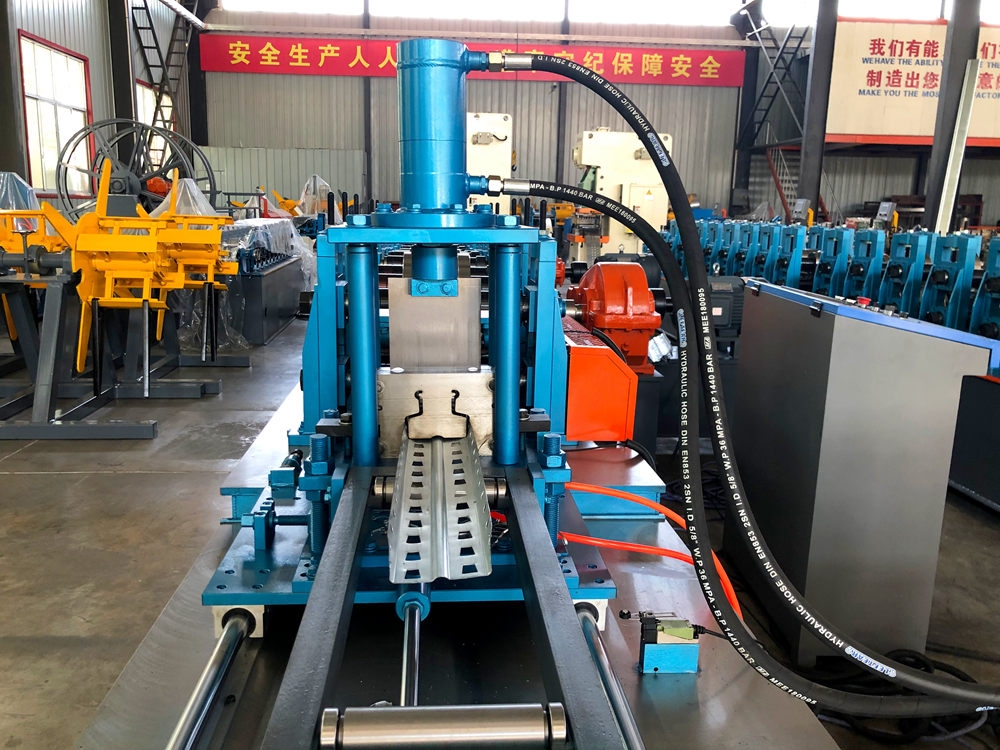
The Evolution and Significance of Highway Sound Barrier Cold Bending Machines
Highway sound barriers have become a crucial element in urban planning and environmental management. As cities expand and traffic increases, the need for effective sound mitigation strategies grows. One of the technological advancements that have emerged in this domain is the cold bending machine, specifically designed for the fabrication and installation of sound barriers along highways. This article explores the significance, functionality, and advantages of these machines in modern infrastructure projects.
Understanding Highway Sound Barriers
Sound barriers, typically constructed from materials like concrete, wood, or specialized composites, function to reduce noise pollution emitted from highways. These barriers can absorb sound, reflect it away from residential areas, and create a more peaceful living environment for urban dwellers. The efficacy of these sound barriers is closely linked to their design and installation, which is where cold bending machines come into play.
The Role of Cold Bending Machines
Cold bending machines are specialized tools that allow for the precise shaping and bending of materials at low temperatures, which is critical for producing sound barrier panels. Unlike traditional bending methods that require heating, cold bending preserves the integrity of the material, ensuring that its structural properties remain intact. This is particularly important for sound barrier applications where strength and durability are paramount.
These machines can work with various materials, including metal and composite substances, aligning with the diverse requirements of sound barrier construction. By using cold bending techniques, manufacturers can create panels with intricate designs that enhance both aesthetic appeal and acoustic performance.
Key Benefits of Cold Bending Machines
1. Precision and Customization Cold bending machines provide high levels of accuracy and customization in the bending process. This precision is essential for producing sound barriers that fit specific highway designs and local regulations. Customized panels can effectively address unique sound mitigation challenges posed by different environments.

2. Material Integrity The cold bending process minimizes the risk of material fatigue and deformation. Tools that operate at low temperatures ensure that the sound barrier panels maintain their acoustic properties, ensuring they perform optimally over the years.
3. Cost-Effectiveness By streamlining the manufacturing process, cold bending machines can reduce labor and production costs. The efficiency of these machines allows for quicker turnaround times, enabling infrastructure projects to stay on schedule and within budget.
4. Sustainability Many modern sound barrier materials are designed to be environmentally friendly. Cold bending machines can be adapted for use with recycled materials, contributing to sustainable construction practices. This not only helps in reducing waste but also meets the increasing demand for eco-conscious building methods.
5. Adaptability Cold bending machines are versatile and can be adjusted to create a variety of shapes and sizes. This adaptability makes them ideal for complex sound barrier designs that may be required in urban settings with space constraints or specific acoustic needs.
The Future of Highway Sound Barrier Technology
As urban areas continue to expand, the challenge of noise pollution will persist, forcing cities to innovate in their approach to sound mitigation. Cold bending machines are likely to play a pivotal role in this evolution by facilitating the development of advanced sound barrier technologies.
Innovations in material science may lead to the creation of even more effective sound absorption materials that can be shaped using these machines. Additionally, as smart cities become more prevalent, integrating technology into the design and monitoring of sound barriers will be essential. Cold bending machines can help in adapting barriers for integrated sound monitoring systems, providing real-time data on noise levels and environmental impact.
Conclusion
The introduction of cold bending machines has significantly advanced the way highway sound barriers are produced and installed. These machines offer precision, material integrity, cost-effectiveness, sustainability, and adaptability, making them indispensable in modern infrastructure projects. As we face increasing urbanization and its associated challenges, embracing such innovative technologies will be vital in creating quieter, more livable cities. The journey of sound mitigation continues, and cold bending machines will undoubtedly be at the forefront of this important endeavor.